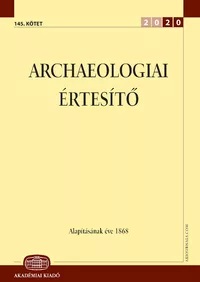The Súl′ov-Hradná II: Military deposit of Lusatian culture from Western Slovakia
The Súl′ov-Hradná II: Military deposit of Lusatian culture from Western Slovakia
Author(s): Filip OndrkálSubject(s): Archaeology
Published by: Akadémiai Kiadó
Keywords: hoard; swords; Lusatian culture; Urnfields; Western Carpathians; Final Bronze Age
Summary/Abstract: The Final Bronze Age (ca. 1080–725 BC) in the Western Carpathians is characterized by increased cross-cultural militarization, which culminated in the collapse horizon era in Ha C1a. Here, the Lusatian culture introduced a series of investments in defensive infrastructure in the Ha A2–B1 period, many of which were maintained and reinforced over the following centuries. Spectacular finds of deposited weapons, including bronze swords (Komjatná, Martinček, Liptovské Sliače), which are rarely found in graves of that time, are known from the Váh river valley. The Final Bronze Age hoard of Súľov-Hradná II, Bytča dist. (Ha B1; 1080–960 BC), newly represents a multi-typic find of 9 bronze swords (reine Schwerthort) and magnificently illustrates the recurring codified behaviour of votive weapon deposition in the aquatic and mountain environment of the Western Carpathians. As the Old Germanic toponym of Žibrid hill (867 m; germ. Sivrit/Sieg-fried = victorious peace) suggests, the knowledge of the deposition event may have survived to the present day, and it recalls the old Celto-Germanic rule of sacrificing the weapons of the defeated party, and provides a powerful addition to the understanding some characteristic and strikingly recurring patterns in the bronze archaeological record in Central Europe
Journal: Archaeologiai Értesítő
- Issue Year: 147/2022
- Issue No: 1
- Page Range: 105-125
- Page Count: 21
- Language: English
- Content File-PDF

